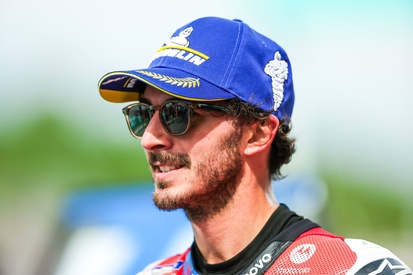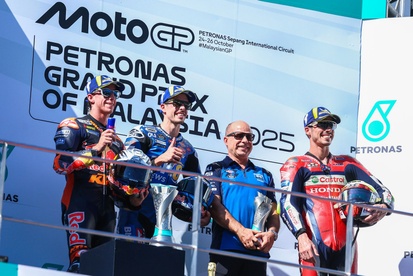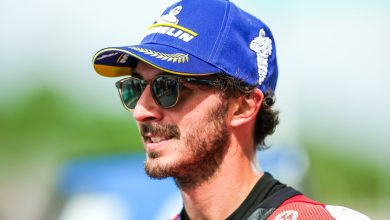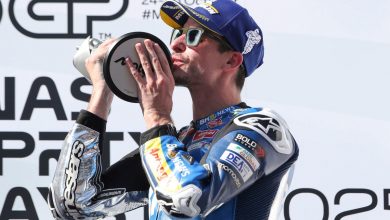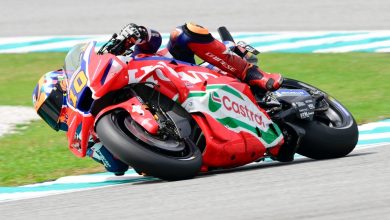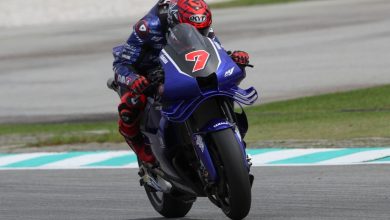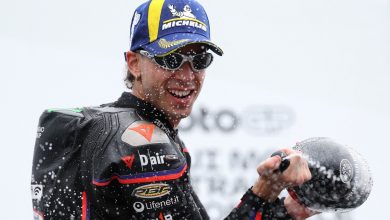Why did KTM succeed and Aprilia struggle in MotoGP’s Malaysian GP?
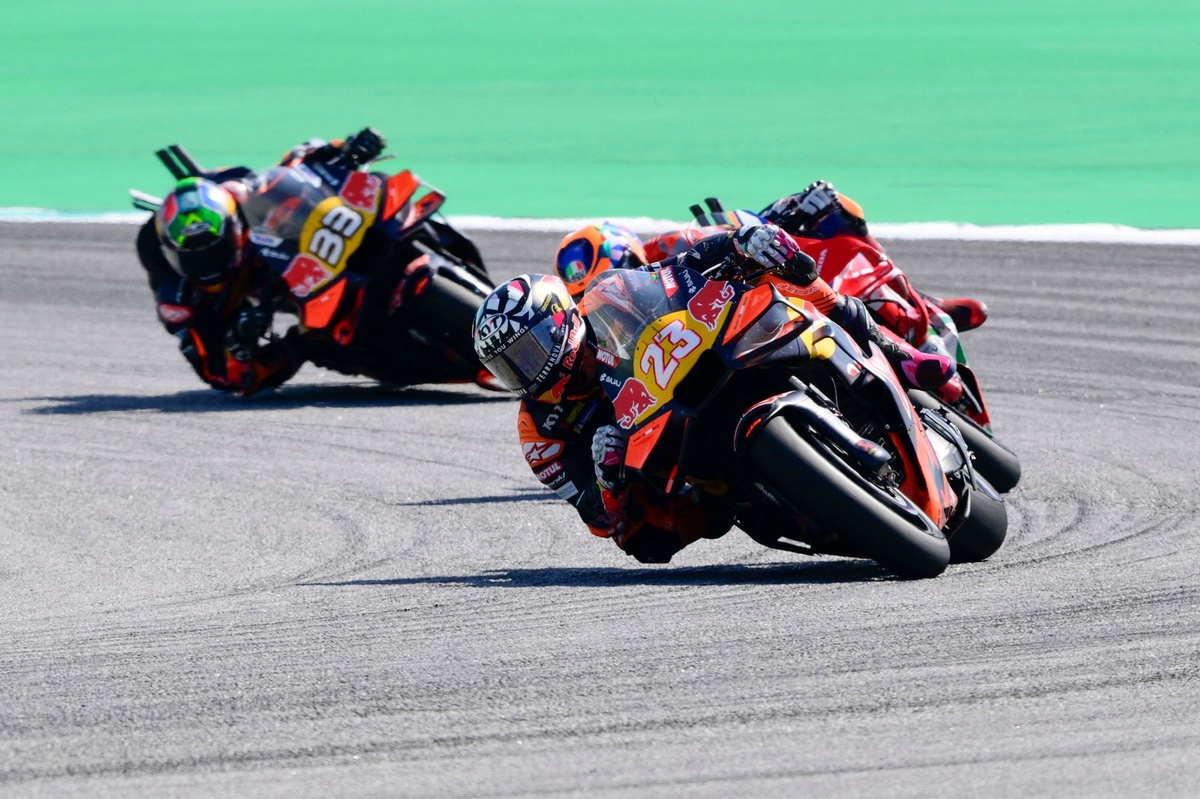
Aprilia has developed a versatile bike that performs well across a wide range of circuits, while KTM’s form still tends to fluctuate depending on how well a track suits the RC16 – or at least, that was the conclusion most drew from recent rounds. The Malaysian Grand Prix, however, suggested that assumption might not have been entirely accurate.
At Sepang, Aprilia failed to live up to the high expectations and was reduced to an also-ran, while KTM rose to the fore and became Ducati’s closest challenger. The reversal in fortunes for the two manufacturers was down to multiple reasons, some within the teams’ control, others dictated by conditions.
Why was KTM suddenly so strong?
Gap to pole in qualifying: 0.362s
Gap to sprint win: 5.155s
Gap to race win: 2.676s
Gap to fastest lap: 0.438s
The RC16 has been overconsuming its tyres all season, and the problem was exacerbated in higher temperatures during the flyaway races. In Australia, Pedro Acosta started strongly and even fought Raul Fernandez for the lead before fading to fifth as his rear tyre gave out completely.
That outing served as a wake-up call for KTM, which diverted focus to solving the issue in the run-up to the Malaysian GP. The riders also chipped in, and made extending tyre life their main priority from lap one. That meant that with the temperatures being higher than both Friday and Saturday, the KTMs were still able to a maintain strong pace at the end of the grand prix.
“We tried to load the front a little bit more to try and make the front stick and it seemed to help a little bit,” explained factory rider Brad Binder.
“The biggest thing is just to really try and be super clean on the throttle. That was the main goal.”
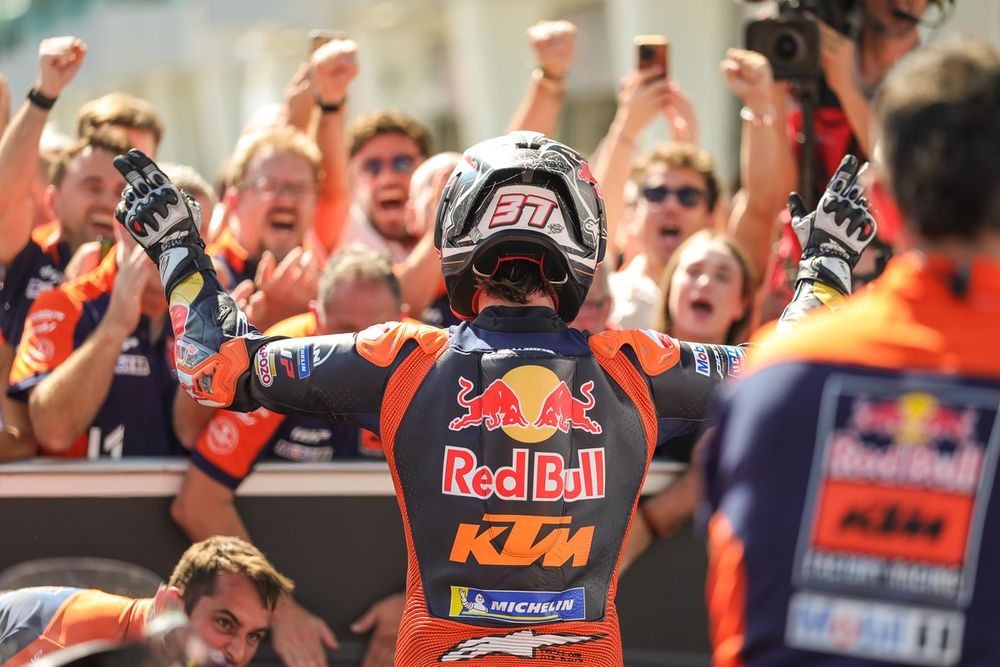
Pedro Acosta, Red Bull KTM Factory Racing
Photo by: Qian Jun / MB Media via Getty Images
Acosta also took a bold decision to cut down on the use of electronics, instead relying on his own feel to manage the tyres. He nursed the tyres well in the first half of the race, opting to stay behind Francesco Bagnaia after the factory Ducati rider thwarted his overtake attempt on lap 3.
Of course, KTM hasn’t found a magic button to completely solve its tyres woes, but Pol Espargaro, standing in once again for Maverick Vinales at Tech3, was encouraged by the turnaround.
“The bike that we have at the moment, it’s not the best bike we want, but it’s a good package that we could solve the problem after Phillip Island,” he said.
“We had a good degradation, where the tyre was suffering a lot, we could manage. So, it means we learn from our mistakes.”
Acosta finished the race just 2.7 seconds behind Alex Marquez, roughly half his deficit to the sprint race winner on Saturday. The double podium brought crucial points for KTM, and ensures it retains a faint chance of beating Aprilia to second in the championship.
But equally encouraging for KTM was the fact that both Enea Bastianini and Binder were able to recover from their poor starting positions to finish inside the top 10.
Bastianini still continues to start each race weekend with KTM on the back foot, feeling like he “is jumping on the bike for the first time”. But progress through the weekend is usually rapid, and after qualifying in 19th place, he climbed his way up to seventh.
“During the warm-up, I saw again the potential to do a great race,” he said. “And, well, when you are behind the window, especially in the track, it’s very hot, it’s difficult to push and to force on the front.
“But, when I was alone, it was much better. And I did a good job.”
On Saturday, Binder suffered what he described as the “worst race of my life”, as he kept spinning and “getting knocked from side to side like a washing machine”.
However, there was no repeat of those inexplicable problems on Sunday, and he bagged a solid haul of points in ninth.
Qualifying still remains a weakness for Binder, but his recovery ride was nevertheless quite impressive.
“As soon as we lose the rear grip, the front starts to suffer. And then when the front really suffers in the end, it gets really, really tricky.
“We know there are things there that helped us and it’s just a matter of time until we get there.”
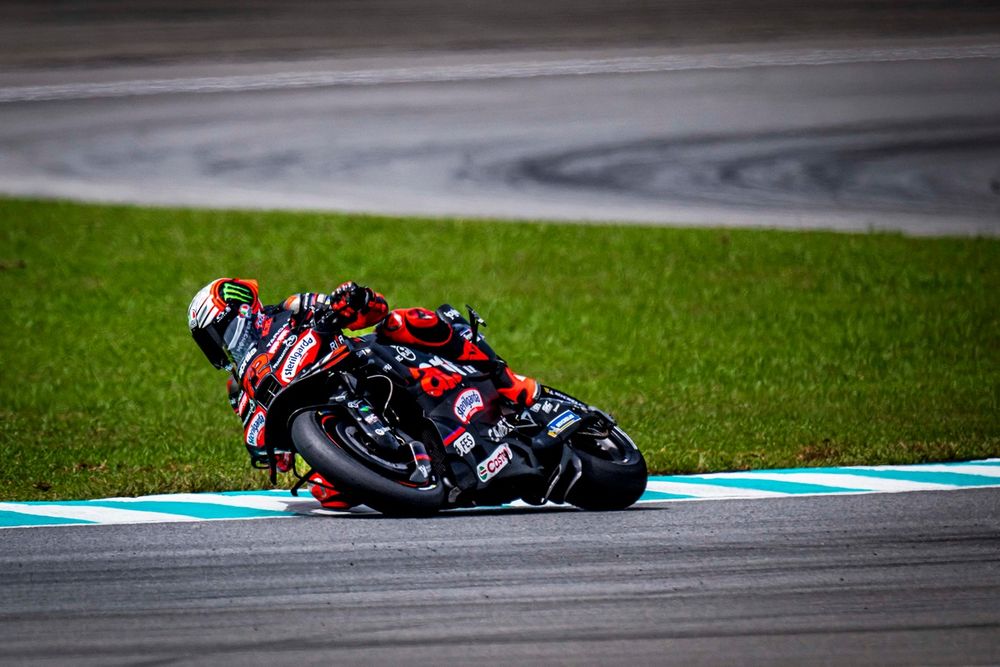
Marco Bezzecchi, Aprilia Racing
Photo by: Shameem Fahath / Motorsport Network
What was behind Aprilia’s shocker?
Gap to pole in qualifying: 0.548s
Gap to winner in sprint: 10.2s
Gap to winner in grand prix: 19.2s
Gap to fastest lap: 1.344s
Aprilia arrived in Malaysia knowing Sepang would be challenging. While the Noale marque has completely got over the overheating issues it previously struggled with in Asian rounds, the weekend exposed the remaining weaknesses of its package.
On Friday and Saturday, Aprilia riders felt its lack of performance was at least partly down to the conditions, with track temperature being lower than usual and the asphalt not offering the same level of grip they had come to expect at Sepang.
The mercury did shoot up on Sunday, but the rescheduling of the Moto2 race meant the conditions were still different from usual. Either way, the damage had already been done by that point, as neither of its four bikes had qualified inside the top 10 on Saturday.
Unlike the KTM contingent, Aprilia’s riders made little progress in the race, with Ai Ogura ending up as the best representative of the manufacturer in 10th, over 19s down on race winner Marquez. That translated to a deficit of almost a second per lap.
The marque’s lead performer Marco Bezzecchi was among the few to opt for the less-favoured medium tyre, believing that it might be better suited to the hotter conditions. This gamble backfired spectacularly and he finished the race in 11th, just behind Ogura.
With the right tyre choice, he believed he could have enjoyed a similar performance as in the sprint, where he was classified sixth after Fermin Aldeguer’s penalty.
“We knew that coming here was going to be a bit more difficult compared to Phillip Island. Before Phillip Island, we didn’t know what we could expect from Phillip Island. But, coming here, having done the test in February, we knew that the bike was working in a different way,
“I felt much, much better than in the test, so because of this I’m quite satisfied. But of course, we still have some job to do.
“I think that the behavior of the bike in general this weekend is super good for us because we discovered many things to work on. We already have many ideas.
“Of course, the result is not the best, but it’s part of the process, and we will keep working as always to try to improve.”
Australian GP winner Fernandez also went for the medium front like Bezzecchi and was having an uneventful race in 14th place when he went down at Turn 1.
Lorenzo Savadori, subbing for an injured Jorge Martin, finished the race in 16th and was puzzled as to why Aprilia was lacking pace.
“Honestly, I don’t know why we cannot push at 100% here. But we need to understand better to find a good solution,” Savadori said.
Asked what changes he wants on the Aprilia when MotoGP returns to Sepang in February for pre-season testing, he added: “It’s difficult to say, it’s just nothing too big. In MotoGP, the [difference in] lap time for everybody is very small. So just details
“At the moment, we are focused on electronics, so we need to improve something there.”
For Aprilia, Sepang was a reminder that progress in MotoGP is rarely linear, and that catching up Ducati would require a gigantic effort over the winter.
We want your opinion!
What would you like to see on Motorsport.com?
– The Motorsport.com Team
